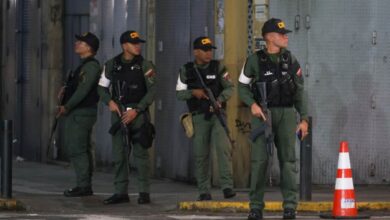“See you in Court” environmentalists defend the Artic from Trump
The exploitation of the Arctic nature reserves is among Donald Trump's plans .

President Donald Trump plans the exploitation of nature reserves in the Arctic. / Photo: Pixabay
The Woman Post | María Lourdes Zimmermann
Listen to this article
Leer en español: “Nos veremos en la Corte” así defenderán los conservacionistas el Ártico
While 190 countries of the world agree on the global energy transition to prevent the temperature of the planet from rising two degrees, the president of the United States Donald Trump will auction for oil exploitation one of the most important wildlife refuges in the country and emblems of the natural world.
The Interior Department's decision to proceed with the opening of the “crown jewel” of the country's wildlife refuge system to oil and gas development is a threat to the iconic Arctic wildlife and indigenous communities that depend on this pristine land, according to The National Wildlife Federation.
The release of the administration's finalized plans to allow drilling for the Arctic National Wildlife Refuge reverses more than five decades of protections for one of our nation's last wild places, adds the Federation.
“Polar bears, caribou, musk ox and waterfowl depend on the unspoiled habitat of the Arctic National Wildlife Refuge for their survival. Opening this pristine landscape for oil and gas drilling ignores the solid science of the federal government's top wildlife biologists, ”said Collin O'Mara, president and CEO of The National Wildlife Federation. "As it is clear that this administration refuses to follow the law and silences its top scientists, we will see them in court to stop this reckless decision."
Numerous scientific studies in the Arctic have shown that drilling in this region would have a devastating effect on wildlife populations and exacerbate climate change, but the administration ignored those studies for its environmental review. A poll conducted last fall by Yale University showed that two-thirds of Americans oppose the development of oil and gas activity because of the environmental damage it would cause.
Located in the northeast corner of Alaska, the 19.6 million acre Arctic National Wildlife Refuge was established 60 years ago and is home to more than 200 species of birds, which migrate to the refuge to breed in the summer. Up to 300,000 snow geese visit the coastal plain each fall to feed on the tundra.
Other wildlife travelers to the Arctic Refuge include the 130,000-member porcupine caribou herd. Each spring, the herd migrates more than 1,400 miles through Canada and Alaska to give birth on the refuge's coastal plain. Caribou are also part of the cultural identity and are the main source of subsistence food for the Gwich'in living in the region.
Also read: Blue forests, the new protagonists of planet earth
The decision to exploit the Arctic and extract the present reserves, satisfies an old demand of the republicans, who have spent 40 years trying to open the shores of the protected area to hydrocarbons with the avowed intention of promoting the economic development of Alaska.
But Trump's decision comes at a time of global climate emergency, a pandemic-like global economy downturn and instability in oil prices. Faced with rising prices, Western ambitions focus their eyes on the places where potentially the world's largest crude oil reserves are still found.
Everybody wants a quarter of the pie in the Arctic
One of these remaining points of hydrocarbon wealth in the world is the Arctic. According to experts, the vast region is probably "the only major source of unexploited hydrocarbons on the planet."
“There is a great focus of attention in the Arctic, especially now, due to the great wealth of natural resources. The development of events in the Middle East places greater emphasis on this issue, ”said Kuupik Kleist, Prime Minister of Greenland, at a press conference in Ottawa (Canada), according to Reuters.
The Arab oil-producing countries still have 140 years of reserves and the United States 65 exploiting unconventional oil and gas reserves, which would suggest that the world is not yet ready to make a rapid and definitive transition towards renewable energies, especially when developing countries are not making the final leap in transition and the Arctic is full of oil, climate change is facilitating exploitation and Donald Trump does not care about natural wealth or environmental consequences.
But Greenland also has its interests, with an autonomous government that is part of Denmark, it is one of the five main actors in the distribution of the remaining oil . And Canada, the United States, Russia and Norway also want their piece of the cake, says the Organization of Ibero-American States OEI in an article published on its website.
“During the last three decades of oil exploration in the Arctic, more than 200 billion barrels of oil have been found. It is estimated that there are still 114,000 million undiscovered barrels and 56 trillion cubic meters of natural gas ”, explained Alaistair J. Fraser, president of the Institute for Petroleum Energy and Geoscience at Imperial College London (UK) highlights the OEI.
According to the expert who worked for 30 years at the oil company BP, "if these estimates are correct, the Arctic oil reserves would be equivalent to a fifth of all the undiscovered oil in the world." But the environmental consequences would be unquantifiable and much more at a time of global environmental and climate crisis in which the conservation of all global ecosystems is urgently needed to alleviate the crisis, which is why conservation organizations in the United States oppose Trump's decision and threaten to take the case to court.




